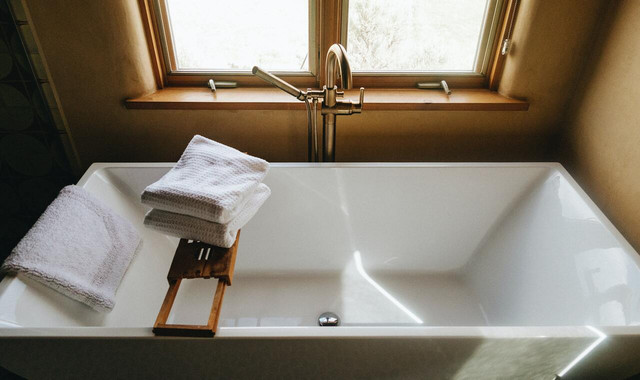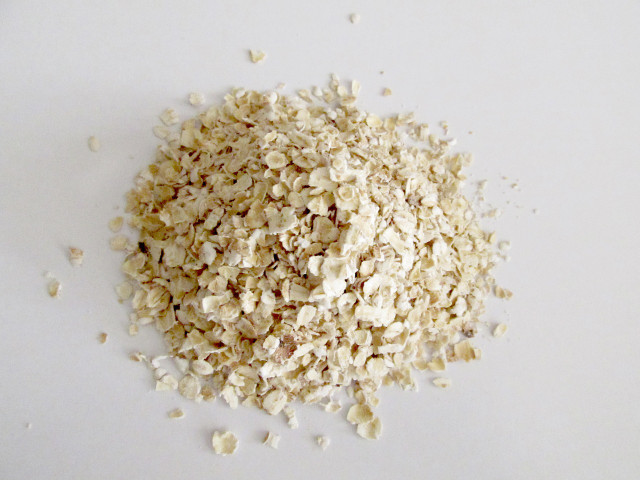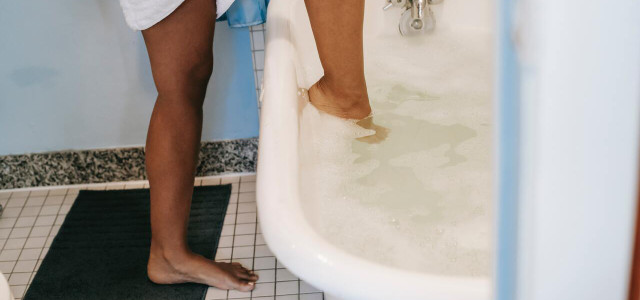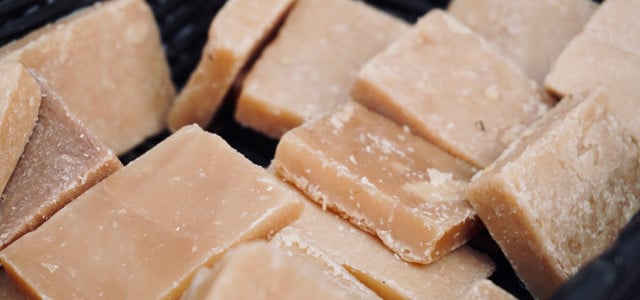Soaking in a DIY oatmeal bath can be very beneficial and works wonders on inflamed, itchy, and irritated skin. Let's look at how to soothe your skin.
Colloidal oatmeal baths are a common remedy for children suffering from conditions like eczema or diaper rash, but they work just as well for adults. Whether you’re suffering from a rash, psoriasis, poison ivy, hives, bug bites, or even dry skin, adding oats to your bath can do you some good.
Most drug stores will sell oatmeal bath packets, but why buy one when you can make it yourself? We’ll show you how to make a DIY oatmeal bath using standard pantry ingredients.
Benefits of an Oatmeal Bath

(Foto: CC0 / Unsplash / Parker Coffman)
Scratching an itch typically does nothing more than irritate the skin even further, so it’s best to avoid it. But how do you get relief from itchy skin? That’s where an oatmeal bath comes in.
Oats and oatmeal have been used for centuries as a skincare remedy for irritated, dry, and flaky skin. You’ll often hear the term “colloidal oatmeal” used when it comes to making an oatmeal bath for itching. They are available to purchase, but they aren’t any different than the oats you eat for breakfast. They are just ground down to a very fine powder and boiled to release the colloidal material – but you can easily do that yourself to make a DIY oatmeal bath.
Oats have antioxidant, anti-inflammatory, and antihistaminic plant chemicals known as avenanthramides, which boost overall skin health. Other benefits, which have partially been verified by studies, include:
- restoring the pH balance of the skin to help it from drying out/becoming irritated
- improving the effectiveness of cleansers and moisturizers
- protecting against sun damage
- cleanses the skin due to presence of saponins
- contains water-binding polysaccharides which help provide a protective barrier on the skin to lock moisture in
DIY Oatmeal Bath: How to Make One



(Foto: CC0 / Pixabay / dessuil)
You can make your own colloidal oatmeal bath in a few simple steps using household ingredients.
- Using a food processor, coffee grinder, or blender, grind the rolled oats into a very fine powder.
- Test to see if it’s ready by placing a tablespoon of oat powder into water – if it dissolves and the water becomes milky, your DIY colloidal oatmeal is ready for the bath.
- Add between ½ cup and 1½ cups of oat powder to a tub full of warm (not hot) water.
- Enjoy your soak for about 15 minutes, up to three times a week for maximum relief.
Tip: If you don’t want to go through the hassle of grinding down your oats, you can simply place rolled oats in a thin sock, or pantyhose, and allow that to soak in the tub. It won’t be quite as effective, but can do in a pinch. This method also uses less oats, meaning you will not have to throw away as much later.
Got itchy feet? Make a foot bath using this recipe, or try our other natural remedies.
Oatmeal Bath: DIY Variations for Hives, Eczema or Chickenpox
Depending on your skin condition, there are a few variations of an oatmeal bath for itching you can make by adding some simple extra ingredients.
- Hives: add approximately 10 drops of lavender oil to improve pain tolerance and also enjoy its anti-fungal properties.
- Eczema: add baking soda or Epsom salts to your oatmeal bath to soothe inflamed skin and reduce irritation and itching
- Chickenpox: add up to 8 drops of tea tree oil to make use of its anti-viral effect.
Note: We do not recommend using DIY oatmeal baths alone to treat any serious condition. Instead, use it in addition to any treatments your doctor recommends.
Read more:
- Dry Skin on Your Hands? Great Natural Ways to Help Chapped Hands
- Tutorial: Natural DIY Body Wash for Beginners
- Homemade Oat Milk: A Simple & Sustainable Recipe
- Overnight Oats: Three Simple Breakfast Ideas
Important Information regarding Health-related Topics.
** Links to retailers marked with ** or underlined orange are partially partner links: If you buy here, you actively support Utopia.org, because we will receive a small part of the sales proceeds. More info.Do you like this post?








